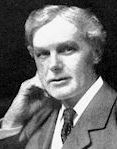LUNGS, INFLAMMATION OF.–The first symptom of Inflammation of the lungs–or Pneumonia, as it is technically called– is a severe chill, followed soon by fever, which continues. The breathing becomes rapid, and pain in the side is complained of. There is a frequent cough, sometimes in long spells. At first the cough is dry, afterwards tough mucus, coloured like rust, is brought up. The patient lies on the back, or on the side affected; he wants to be let alone. The face is deeply flushed. When left to itself, pneumonia either goes on to death, or, more commonly, there is, after three or four days, a sudden subsidence of the symptoms; the fever disappears, the skin, instead of being dry, perspires profusely, and the pain and distress disappear, and the cough becomes loose. Under proper treatment the symptoms may be modified from the first, the dangerous crisis is never approached, and the decline of the disease is gradual. It is now recognised that pneumonia may depend on a specific micro- organism, the presence of which, in addition to chill, is necessary to determine the disease. There is a form of pneumonia which is infectious.
Diagnosis.–Inflammation of the lungs must be distinguished from pleurisy and bronchitis.
For the distinctive signs of each of these diseases, see under BRONCHITIS.
General Treatment.–The treatment of pneumonia is the treatment of all acute fevers–rest in bed, light diet of milk, gruel, beef-tea, sponging two or three times a day with hot water (in which one-sixth part of vinegar may be mixed–unless Aconite is being taken, vinegar being an antidote to Aconite), and, if the pain is severe, poultices to the side affected. Poultices should not be applied continuously. A linseed poultice should be allowed to remain on as long as it keeps hot, and after it is taken off medicated cotton-wool applied and kept on for two hours. Poultices applied in this way interruptedly have better effect than if continuously applied.
Medicines.–(Every hour, or even half-hour, according to the urgency of the symptoms; the intervals between the doses being increased as they subside.)
Aconite 3.
–In the beginning, hot, burning skin; hard, full, and frequent pulse; rapid breathing and violent thirst; great anxiety, either accompanied by pain in the chest or not;dry cough.
Bryonia 3.
–After Aconite; cough, with expectoration of the tough mucus of a reddish or rusty colour; great difficulty of breathing, and stitches in the side or chest; pain increased by movement; mouth dry, yellowish or dark-coated tongue, great thirst and constipation.
Phosphorus 3.
–Cough painful, chest oppressed, breath crackling, heart-beats frequent, rusty expectoration.
Sulph. 6.
–Useful after other medicines, especially Aconite; frequent faints spells; flashes of heat; heat on the top of the head; when the disease remains stationary. Antimonium tart. 6.
-Especially suitable for old people and infants; oppression of the chest; much rattling of mucus; expectoration of frothy mucus; great weakness, nausea, tendency to vomit; liver pain.
Arsen.3.
-When the fever takes on a low type-Typhoid pneumonia, as it is called. Delirium, stupor, prostration, dry tongue; anxious restlessness; much thirst, the patient drinking only small quantities at a time; face pale and anxious.
Lycopod.6.
-Typhoid pneumonia when the cough is loose, or a constant hacking; face red in circumscribed patches; sweat without relief; patient always worse in the afternoon. Lycopod. is also useful for clearing away the remains of the pneumonia when all the acute symptoms have gone.
Rhus. 3.
-In typhoid pneumonia when there is extreme restlessness, tearing cough, tongue red at the tip, great drowsiness.

